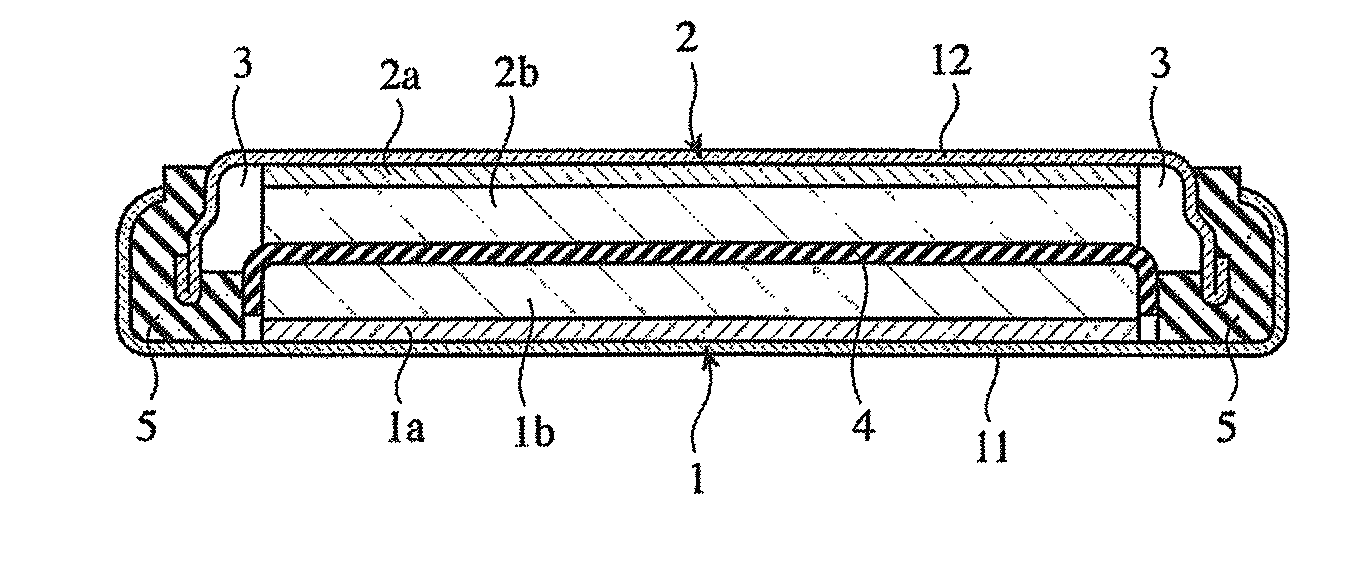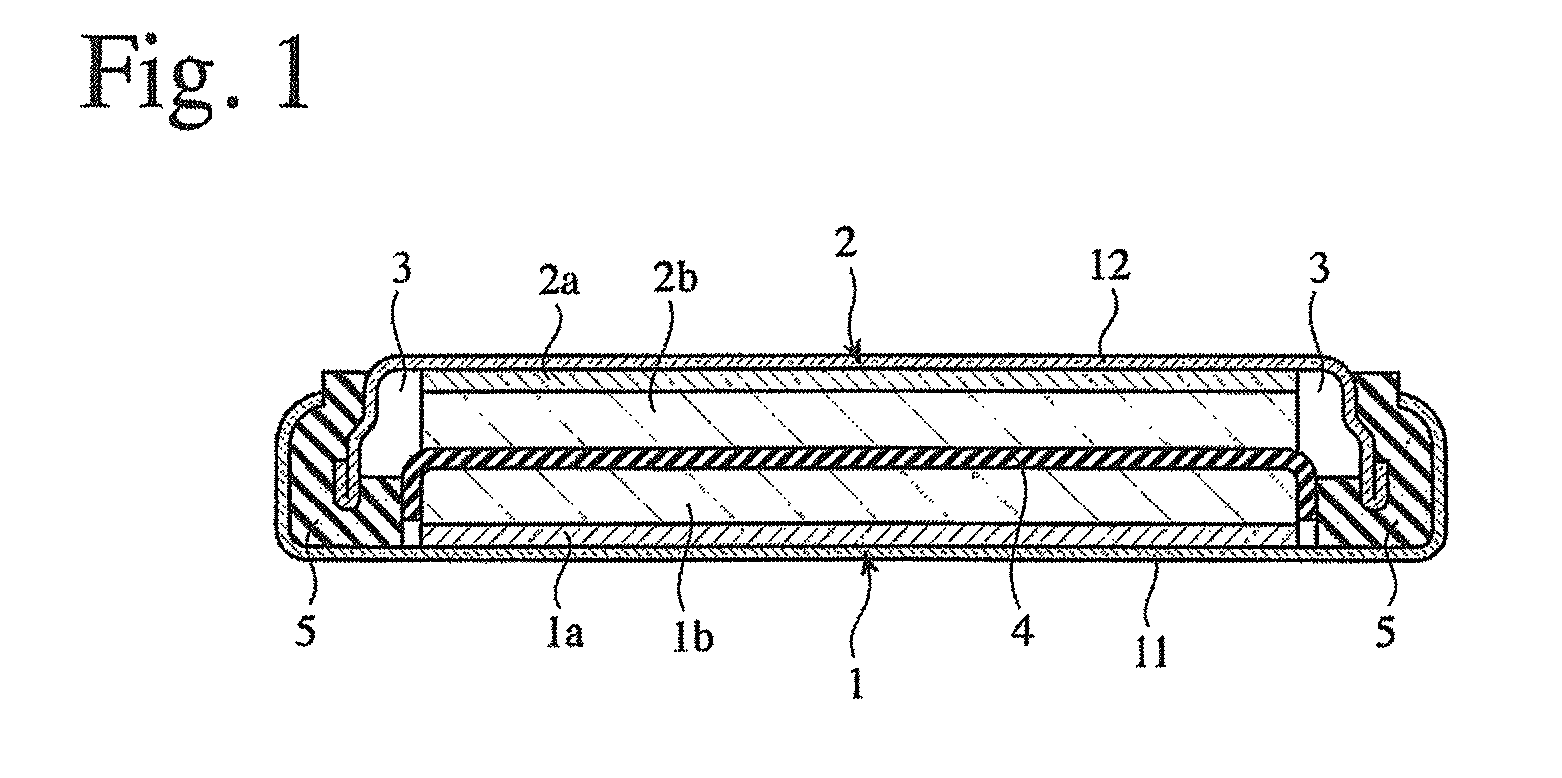Microporous composite membrane and its producing method and use
a composite membrane and microporous technology, applied in the direction of membranes, cell components, cell component details, etc., can solve the problems of low productivity, poor battery productivity, lowering battery capacity, etc., and achieve high-temperature storage, mechanical strength, and shutdown properties. good-balanced permeability
- Summary
- Abstract
- Description
- Claims
- Application Information
AI Technical Summary
Benefits of technology
Problems solved by technology
Method used
Image
Examples
example 1
[0192](1) Preparation of Microporous Polyethylene Membrane
[0193]100 parts by mass of a composition (Mw / Mn: 16.8, melting point: 135° C., crystal dispersion temperature: 90° C.) comprising 30% by mass of ultra-high-molecular-weight polyethylene (UHMWPE) having Mw of 2.0×106 and 70% by mass of high-density polyethylene (HDPE) having Mw of 3.5×105 was mixed with 0.375 parts by mass of tetrakis[methylene-3-(3,5-ditertiary-butyl-4-hydroxyphenyl)-propionate]methane, an anti-oxidant, to prepare a polyethylene composition. 30 parts by mass of the polyethylene composition was supplied to a strong-kneading, double-screw extruder (internal diameter=58 mm, L / D=42), and 70 parts by mass of liquid paraffin was introduced into the double-screw extruder through its side-feeder. The resultant mixture was melt-blended at 210° C. and 200 rpm in the extruder to prepare a polyethylene solution. Subsequently, this polyethylene solution was extruded through a T-die installed at a tip end of the extruder s...
example 2
[0209]A microporous composite membrane was produced in the same manner as in Example 1 except for changing the concentration of the polypropylene solution in toluene to 5% by mass. The amount of polypropylene coated is shown in Table 1. Using the microporous composite membrane, a lithium secondary battery was produced in the same manner as in Example 1.
example 3
[0210]A microporous composite membrane was produced in the same manner as in Example 1 except for changing the concentration of the polypropylene solution in toluene to 8% by mass. The amount of polypropylene coated is shown in Table 1. Using the microporous composite membrane, a lithium secondary battery was produced in the same manner as in Example 1.
PUM
| Property | Measurement | Unit |
|---|---|---|
| temperature | aaaaa | aaaaa |
| thickness | aaaaa | aaaaa |
| heat shrinkage ratio | aaaaa | aaaaa |
Abstract
Description
Claims
Application Information
 Login to View More
Login to View More - R&D
- Intellectual Property
- Life Sciences
- Materials
- Tech Scout
- Unparalleled Data Quality
- Higher Quality Content
- 60% Fewer Hallucinations
Browse by: Latest US Patents, China's latest patents, Technical Efficacy Thesaurus, Application Domain, Technology Topic, Popular Technical Reports.
© 2025 PatSnap. All rights reserved.Legal|Privacy policy|Modern Slavery Act Transparency Statement|Sitemap|About US| Contact US: help@patsnap.com



